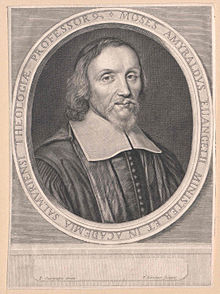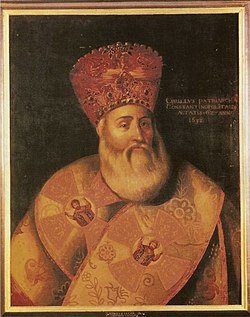It’s that time of year to root thru the archives and put together the list of the best book I read in 2018. Yes, the focus is on those I read not those that were released. Perhaps you will find a book worth reading, one that strikes your fancy. I’m not including the commentaries I read. I seemed to have less time for additional reading this year, but maybe that was just my distorted viewpoint.
Sing!: How Worship Transforms Your Life, Family and Church by Keith and Kristyn Getty. This is a short book about the importance of singing. My interest was congregational singing. I’m grateful to be part of a congregation that loves to sing. Many don’t have this blessing. This book wants to help such congregations understand the importance of congregational singing.
Love Thy Body: Answering Hard Questions about Life and Sexuality by Nancy Pearcey. This was a great and challenging book to help Christians think through the many changes taking place in our society. Some might question some of the philosophical presuppositions, but I found her analysis helpful. I was prompted to preach about some of these topics in the summer.
Finding Grace in the Face of Dementia by John Dunlop M.D. is written at a everyday person level to help people understand the process of patients with various forms of dementia. He looks at it in terms of medicine as well as faith. He helps people walk through this from both perspectives. He includes end of life issues. As one who has a parent with Alzheimer’s I found this helpful.
The Gospel Comes with a House Key by Rosaria Butterfield. In this volume Rosaria focuses on intentional hospitality. She ties this in with the gospel. It is well worth reading.
God and the Transgender Debate by Andrew T. Walker takes on a difficult subject from a biblical perspective. He balances truth and compassion which (sadly) seems to be a rare combination. Due to the fall we are sinners and broken. He addresses both the rebellious and those who are struggling with unwanted feelings thanks to the fall. There was plenty of wisdom in this book.
Sexual Morality in a Christless World by Matthew Rueger examines the claim that Christian sexuality is regressive. He looks at the context for Christian sexual morality and how it confronted Greek, Roman and Jewish sexual mores. He then examines, briefly the biblical view of homosexuality and same sex marriage. As a Lutheran pastor, he often bring the law and gospel distinctive to bear on these matters. As confusing as our days might be, this book will make you glad you weren’t born then.
Hit By Friendly Fire by Michael Milton is about how to cope with the damage done by other Christians. It is short and to the point. It is also helpful for all who’ve been hurt by other members of the family.
Honest Evangelism by Rico Tice is an honest book about the challenges of evangelism. Much of this focuses on the painline. Like a guy trying to decide whether to ask a girl out, we must decide to cross the pain line. This is one of the main reasons we don’t engage in evangelism: a refusal to cross the painline.
The Prodigal Prophet: Jonah and Mystery of God’s Mercy by Tim Keller. He uses Jonah to expose us all. This is another great book by Keller that applies the gospel in winsome fashion to both our younger brother waywardness and older brother bitterness. Yes, he connects Jonah’s ministry to the parable of the two sons at times. This book poked and prodded me in a difficult time.
Puritans:
Christian Love by Hugh Binning. This is part of the Pocket Puritan series. This was a challenging little book focused on how God loved us and how we are then to love one another. There was plenty here about self-denial. This is not about emotions but the responsibilities of love.
The Fading of the Flesh and the Flourishing of Faith by George Swinnock came at a good time for me. I’m struggling with getting older and those realities pressing in. The flesh will fade, but will faith flourish? The foundation of the book is a funeral sermon he preached. Good and encouraging material from the Puritan.
History:
The Last Battle is about the final battle in the European theater of WWII. It actually took place after Germany had surrendered. A group of Allied soldiers, resistance fighters and German soldiers joined forces to free some French political prisoners before the SS executed them. This is a very interesting story that could be well served by a movie.
2000 Years of Christ’s Power by Nick Needham. This is a great 4-volume (so far?) church history set. In the first volume he includes the African church, which is often overlooked. Each volume includes substantial material on the Eastern church. A result you have a more balanced church history instead of a Europe-centered history. Some of the themes that run thru the volumes are: the doctrine of the Eucharist, the state-church relationship or struggle for power, and how the different branches of the Church related to one another. I was generally encouraged by this set.
The First Heroes by Craig Nelson is about the Doolittle Raid. This is a great piece of history. He spends time giving the background of the raid including the attack on Pearl Harbor, the training, how participants escaped the Japanese or endured their capture as well as how they fared after the war. Their is personal history as well as world history. It made for very interesting reading.
 The fourth, and currently last volume, in Nick Needham’s history of the church (
The fourth, and currently last volume, in Nick Needham’s history of the church (
 Since this controversy is less known I will try to briefly summarize. Amyraut was distressed that many in Reformed theology held to double predestination and the idea that God created much of humankind for the purpose of damnation. Being in France, he was sensitive to the (mis)characterizations of Calvinism by French Catholics. He saw himself as rescuing the Huguenots from this caricature of God as “capricious, unjust, and unloving.” He viewed election in light of the cross instead of the cross in light of election. Therefore, Jesus did not die to save the elect, but died for all humanity. Salvation was conditioned upon faith. Since faith is not possible for fallen sinners, God elected some to salvation. In some ways this is a quibble about the order of decrees (which in my opinion is part of the secret things referred to in Deut. 29:29). In my opinion he presents a very confused God. This view is sometimes called the hypothetical atonement. He’s trying to walk a mediating position between Augustinianism/Calvinism and Arminianism. To me it seems an untenable position- logically unstable and unable to stand long before lapsing into greater problems.
Since this controversy is less known I will try to briefly summarize. Amyraut was distressed that many in Reformed theology held to double predestination and the idea that God created much of humankind for the purpose of damnation. Being in France, he was sensitive to the (mis)characterizations of Calvinism by French Catholics. He saw himself as rescuing the Huguenots from this caricature of God as “capricious, unjust, and unloving.” He viewed election in light of the cross instead of the cross in light of election. Therefore, Jesus did not die to save the elect, but died for all humanity. Salvation was conditioned upon faith. Since faith is not possible for fallen sinners, God elected some to salvation. In some ways this is a quibble about the order of decrees (which in my opinion is part of the secret things referred to in Deut. 29:29). In my opinion he presents a very confused God. This view is sometimes called the hypothetical atonement. He’s trying to walk a mediating position between Augustinianism/Calvinism and Arminianism. To me it seems an untenable position- logically unstable and unable to stand long before lapsing into greater problems.
 As Needham turns to Eastern Orthdoxy we see various splits form in the church. Some feared the power of the Pope and unification with Rome. They were haunted by the Union of Florence. Seeing the success of Protestants in separating from Rome, some like Cyril Lucaris began to use their methods and some theological distinctives. Cyril is controversial, to say the least. He clearly adopted “total depravity” which affected his view of salvation. His critics claimed he was corrupted by Reformed theology. A quite Protestant sounding confession that bears his name (whose authorship is questionable) was condemned and he was too, if he held to those views expressed that confession.
As Needham turns to Eastern Orthdoxy we see various splits form in the church. Some feared the power of the Pope and unification with Rome. They were haunted by the Union of Florence. Seeing the success of Protestants in separating from Rome, some like Cyril Lucaris began to use their methods and some theological distinctives. Cyril is controversial, to say the least. He clearly adopted “total depravity” which affected his view of salvation. His critics claimed he was corrupted by Reformed theology. A quite Protestant sounding confession that bears his name (whose authorship is questionable) was condemned and he was too, if he held to those views expressed that confession. got an my monthly email offering copies of books to review. The New Elder’s Handbook by Greg R. Scharf and Arthur Kok caught my eye. I’m open to ideas about how to do this better, preparing men more fully for the task that God has called them to.
got an my monthly email offering copies of books to review. The New Elder’s Handbook by Greg R. Scharf and Arthur Kok caught my eye. I’m open to ideas about how to do this better, preparing men more fully for the task that God has called them to.
 The first additional resource for discipleship is a tool for a “basic introduction to the Christian life.” It is sort of a “now what” after a person believes. They offer some basics to bible study and then lay it out like how a child grows: eating, walking, talking (prayer), trusting etc. There are lots of verses to look up in each section but it does provide a good process for new believers similar to the old Navigator study guides I used after my own after my conversion.
The first additional resource for discipleship is a tool for a “basic introduction to the Christian life.” It is sort of a “now what” after a person believes. They offer some basics to bible study and then lay it out like how a child grows: eating, walking, talking (prayer), trusting etc. There are lots of verses to look up in each section but it does provide a good process for new believers similar to the old Navigator study guides I used after my own after my conversion.